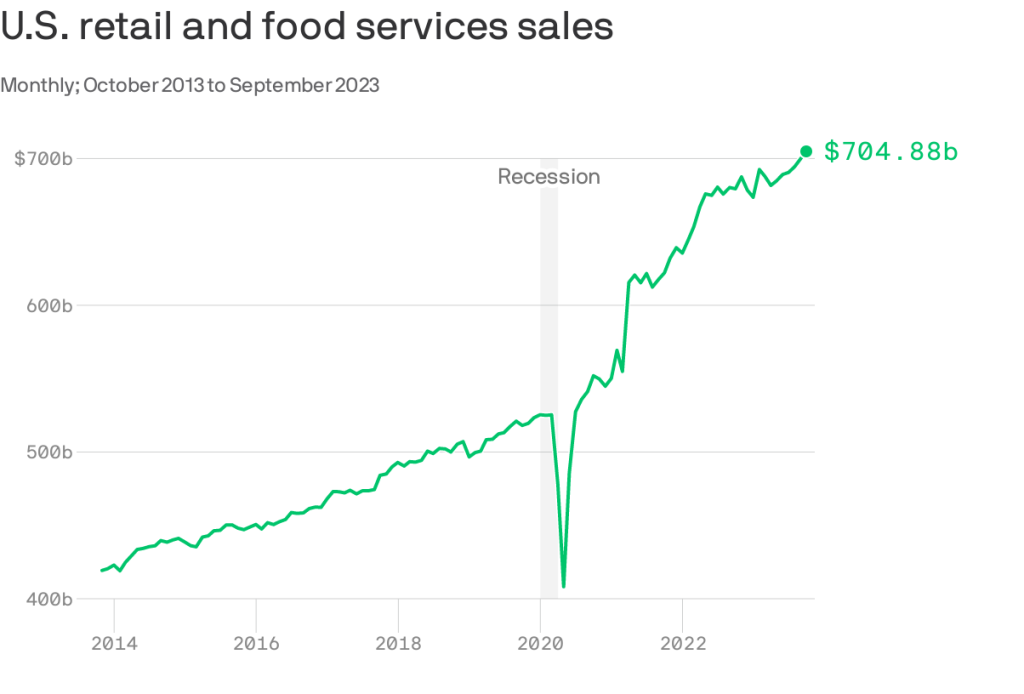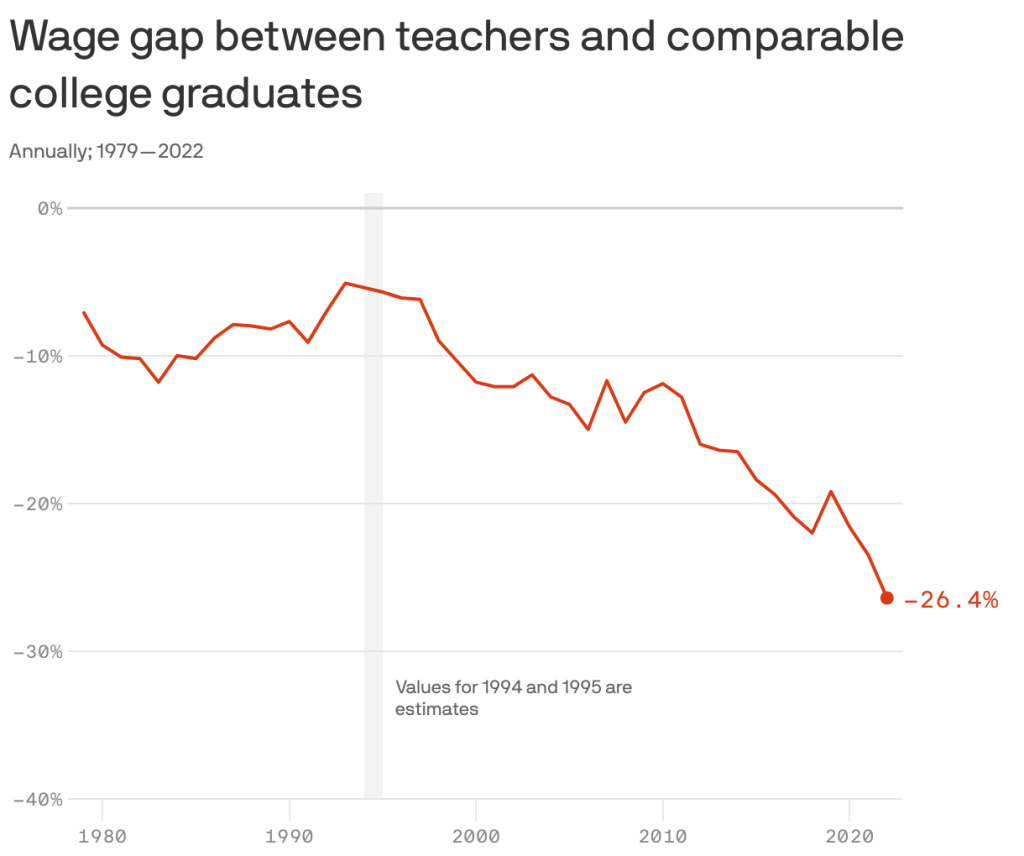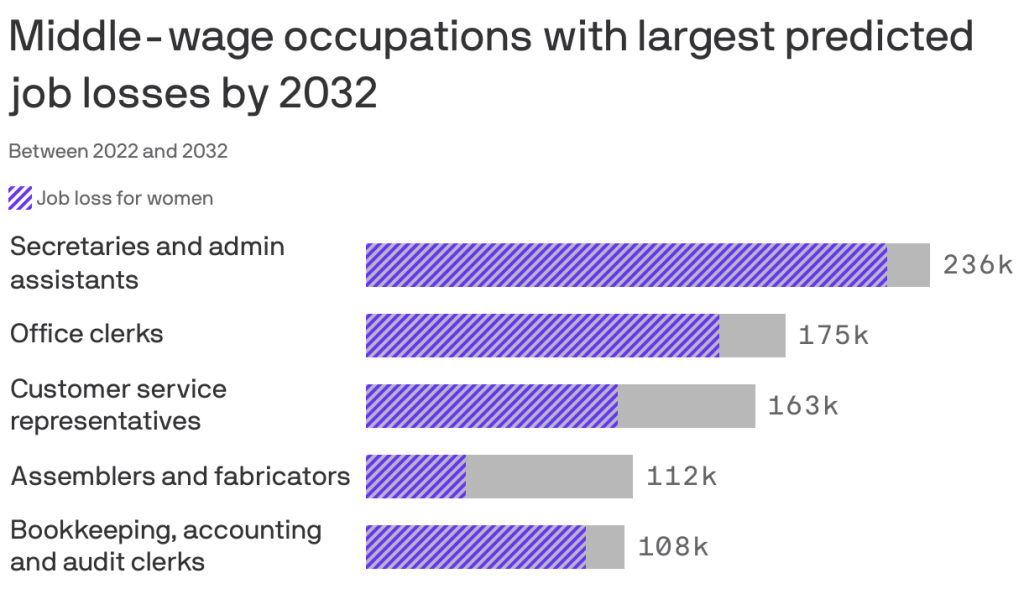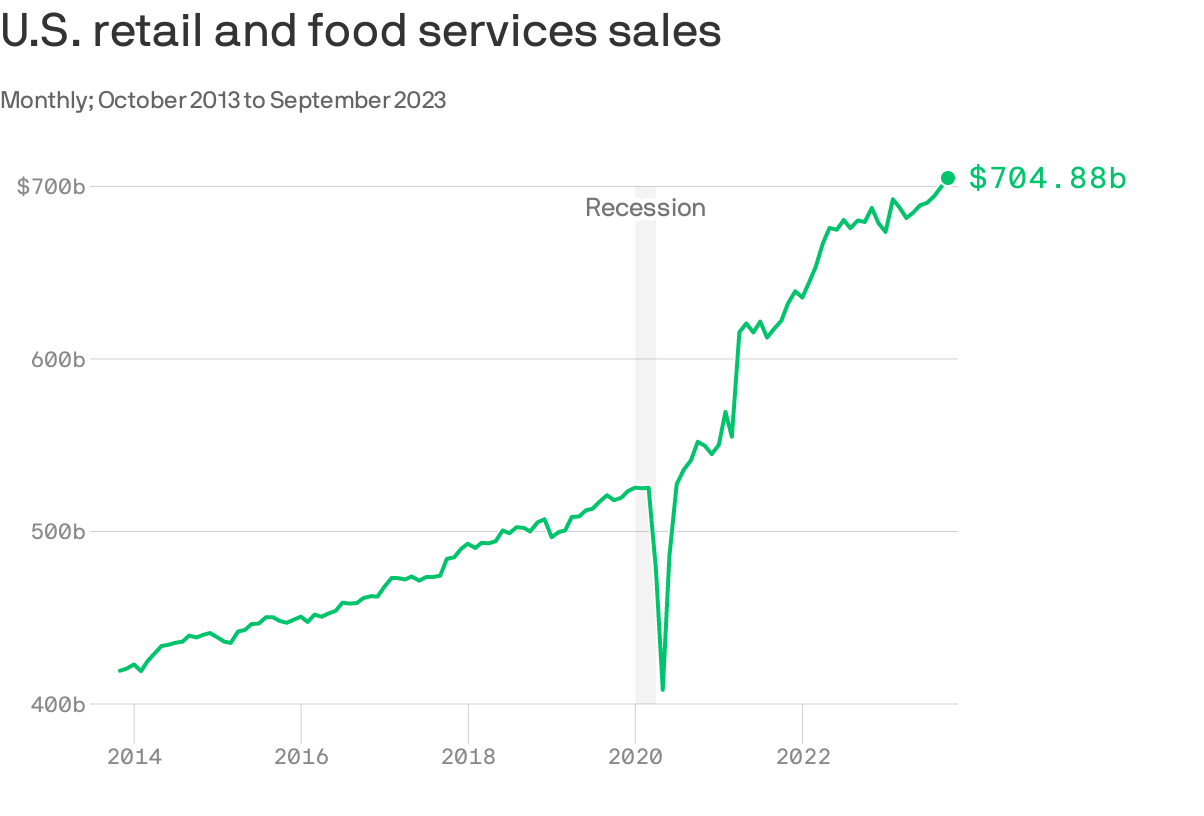November 9, 2023

Data: U.S. Census Bureau, FactSet; Chart: Axios Visuals
Spending up a Storm
Retail sales continue to exceed expectations. These numbers aren’t inflation-adjusted, so much of this increase can be attributed to the 3.7% rise in the Consumer Price Index over the last year, but the fact remains, give Americans money and they will spend it.
The labor market is strong and people continue to receive wage increases. On the whole, people are better off this year than they were last year. As we’ve reviewed in the past, the U.S. economy is nearly 70% consumer spending, so the only way to avoid recession and get that magic soft landing is for people to keep consuming.
Put simply, in an economy based on people spending money, we need people to spend–and that’s exactly what they’re doing. Proving once again that economics isn’t rocket science.

Data: Economic Policy Institute; Chart: Deena Zaidi/Axios Visuals
Headwinds for Teachers
It’s no surprise that public school teachers make less money than other professionals, but this gap has widened in recent years to it’s widest level since 1960. While all industries are suffering from a lack of labor, the nationwide teacher shortage is an acute crisis.
Inflation has continued to erode teacher salaries and has not kept pace with other professions’ increases in the same timeframe–in part due to the inability of public schools to raise salaries in the moment.

Data: BLS and ThirdWay; Note: Admin assistants does not include legal, medical and executive assistants; Chart: Deena Zaidi/Axios Visuals
Job losses hit female-dominated sectors hardest
At a macro level, needing fewer workers when we have fewer workers in America seems like a win-win for the economy. While that may be true, in practice we see that individual industries will be impacted by job cuts in a way that will disproportionately impact women.
The Bureau of Labor Statistics projects 97% of job losses will be for roles that don’t require a bachelor’s degree. When ThirdWay overlaid job loss data with BLS’s gender-based data, they concluded that two-thirds of losses due to technology will impact jobs currently held by women without college degrees (the majority of women in the U.S.).
ThirdWay describes these jobs as “middle-wage”–with wages ranging from two-thirds and three times the median wage, and allow women to “provide for themselves and their families.” Jobs like office clerks, bookkeepers, and administrative assistants. Jobs likely to grow over the same period for non-college workers are low-wage roles paying under $37,000 per year like home health aids.
Much of the job-loss conversations over recent years have focused on male-dominated fields like manufacturing have received much attention, but the potential losses for female-dominated fields have received considerably less attention.








